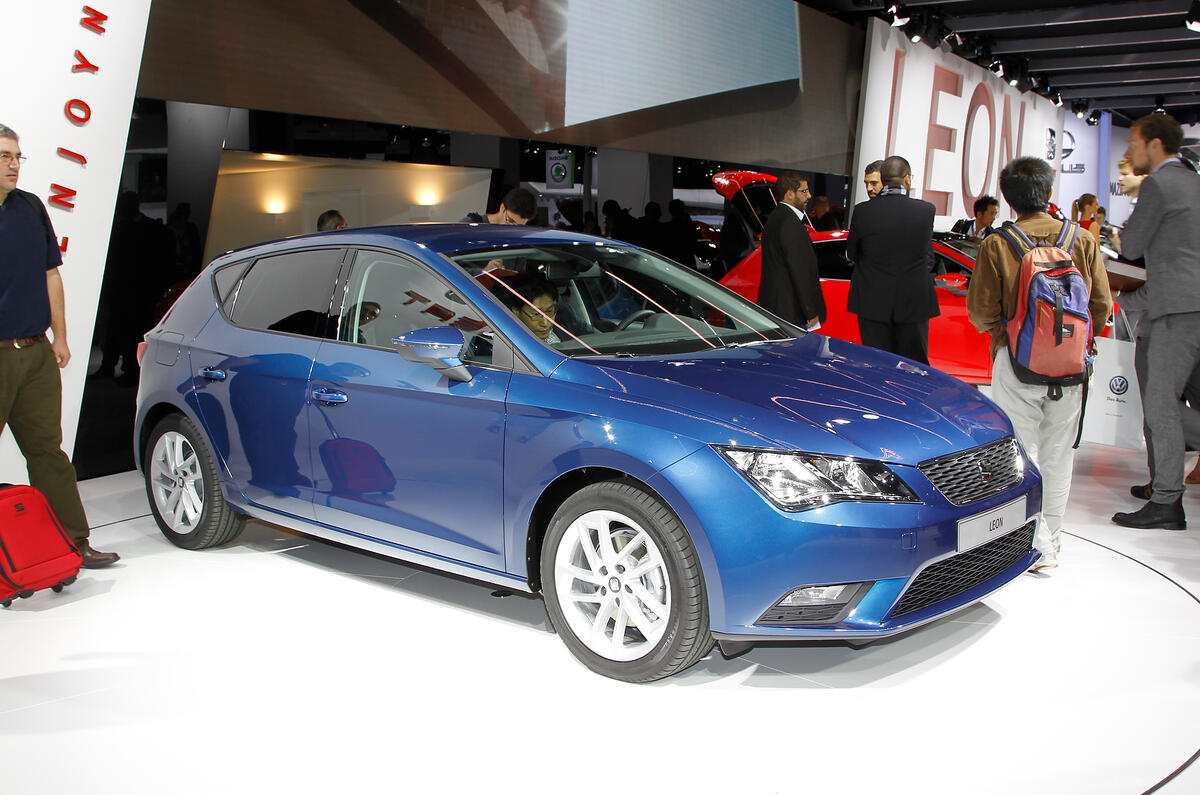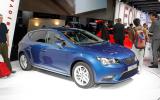Seat will broaden the scope of the third-generation Seat Leon by offering it in three distinct body styles for the first time, in a bid to replicate the success of its most popular model, the Seat Ibiza. It has received its first public outing at the Paris motor show.
Seat has also announced the pricing, which starts at £15,670 for the entry-level 1.2-litre 'S' to £22,375 for the range-topping 2.0-litre TDI in FR trim which are broadly in-line with the model it replaces.
In addition to the five-door, seen here for the first time, the Volkswagen Group’s Spanish offshoot is planning three-door and estate versions and is promising an end to the ‘one car for all purposes’ philosophy that has underpinned previous generations of the Leon.
The five-door, which is the first Seat to wear the company's subtly restyled 'S' badge, is also the first car in the segment to be offered with full LED headlamps. Three-door and estate body styles will follow next year.
The new Leon is the second car to be shown on the Volkswagen Group’s flexible new MQB platform, after the Audi A3. It is also the first production car to feature Seat’s latest design language, which was previewed on the IBE, IBX and IBL concept cars of the past three years.
The “technical, sharp look” was initially the work of Luc Donckerwolke, now head of advanced design for the VW Group, before being further honed by Seat’s current design chief, Alejandro Mesonero-Romanos.
The new five-door Leon is 4263mm long, 1816mm wide and 1459mm high. That’s 52mm shorter, 48mm wider and 4mm higher than the outgoing machine. Its wheelbase is also 58mm longer, at 2636mm.
The use of the MQB underpinnings provides a weight saving of about 90kg compared with the Leon Mk2, which weighed 1250kg in its most basic engine guise and trim level.
The new Leon is to be offered in the UK with a wider choice of engines than the current second-generation version. It will get five petrol options and four diesel variants from the VW Group’s engine range, although not all of them will be available at launch.
The petrol line-up comprises a 1.2 TSI with either 85bhp or 104bhp and a sub-140g/km 1.8 TSI with 178bhp. A 1.4 TSI with either 120bhp or 138bhp will follow. The 138bhp version will have Active Cylinder Technology, which closes down two cylinders during light throttle loads.
The oil-burners in the range are a 1.6 TDI with either 89bhp or 104bhp, and a 2.0 TDI offered in 148bhp or 181bhp states of tune. Seat says the 148bhp version of this engine will emit less than 110g/km and return more than 70mpg. As with the current car, the frugal Ecomotive and sporty FR and Cupra sub-brands will feature in the Leon line-up. The car pictured here is the 148bhp FR variant.




























Join the debate
Add your comment
Looks pretty good. I just
Looks pretty good. I just hope the sales team at the local dealer have changed like the car.....
I thought one of the
I thought one of the advantages of using LEDs for headlights was that you could be more imaginative with the size and shape of the light units. These are just standard units with LEDs inside: They don't even fill the units, leaving awkward gaps. Considering every Leon will have them Seat could have designed a more radical front end: They've missed a trick.
Oversprung??
I like the looks, although a bit derivative compared to its 2 predecessors.
However why does it have to have 2 different back axles. Vauxhall stated, when they made the current Astra's torsion beam rear end that it cost as much as a multi-link system as they'd supposedly designed it to work as well as a multilink (I don't know if it does or not) but with superior packaging and weight. Presumably as the MQB platform is clearly designed for a multilink rear there will be no packaging advantages, so the torsion beam axle will just be to save costs on the cheaper models, this suggests to me that they probably won't ride and handle as well as the 148bhp+ models.
Also is the 90kg savings over the previous Leon on the torsion beam or independent rear versions?